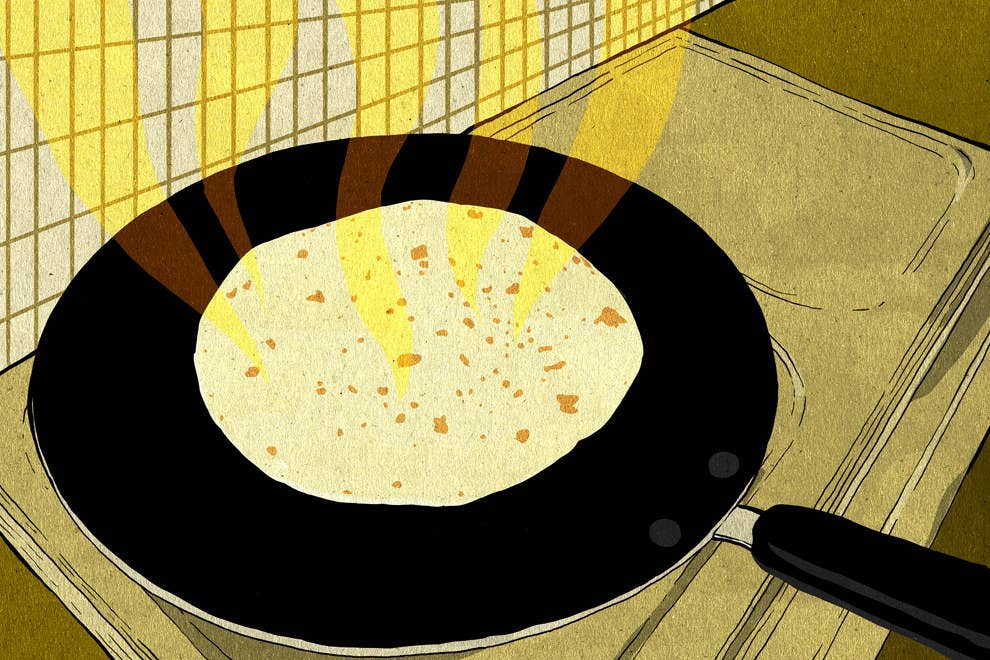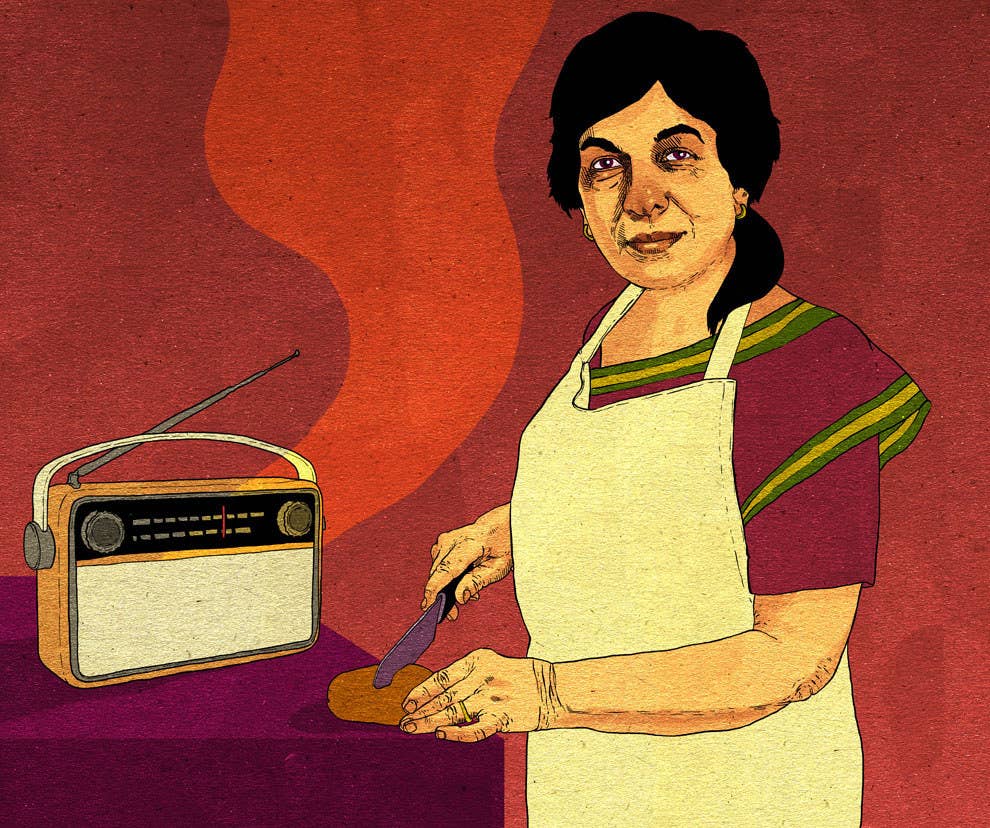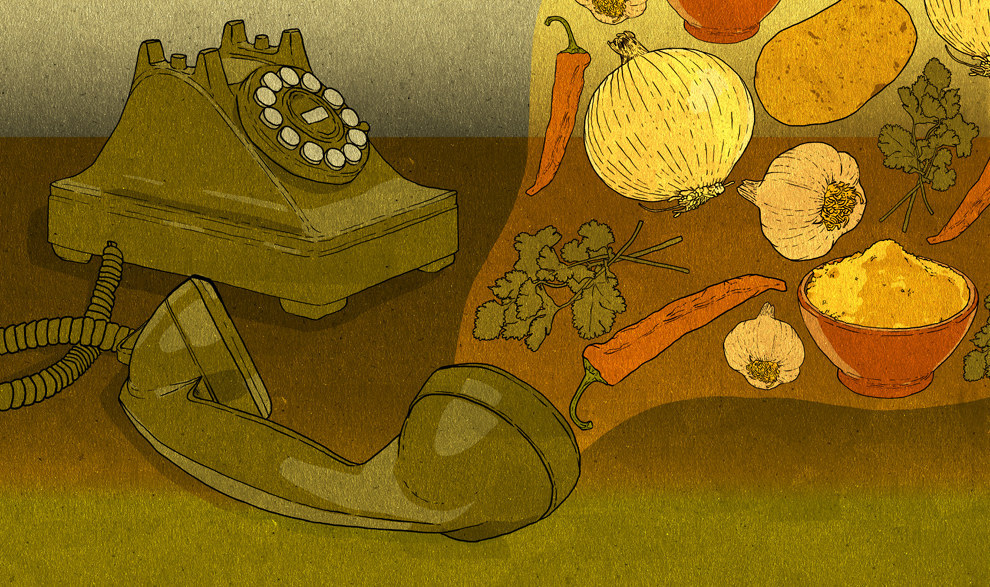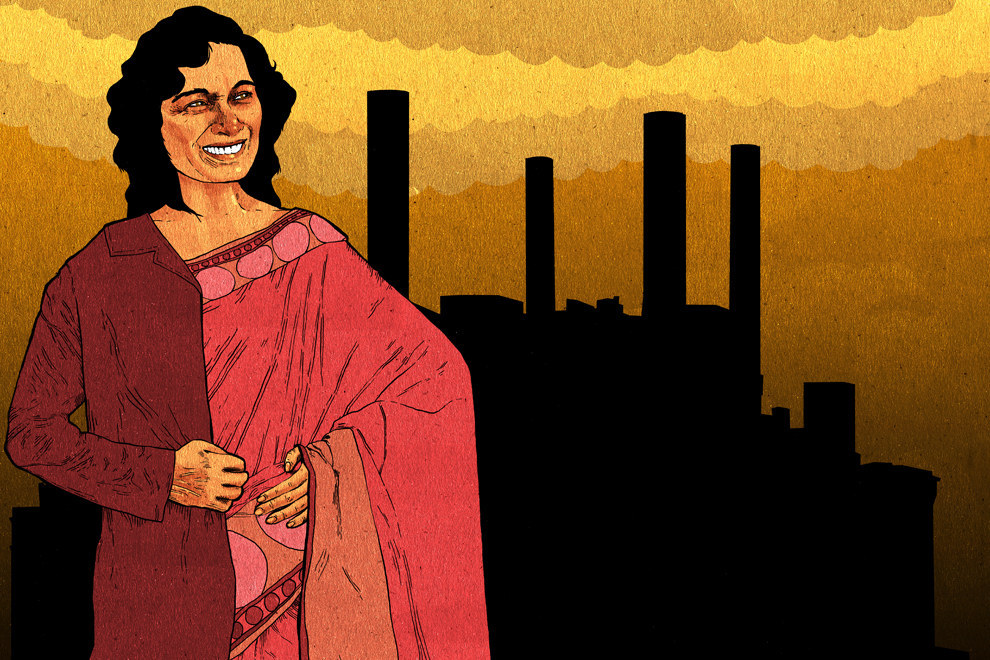
I am standing in a takeaway shop that sells "authentic home-cooked Gujarati food", listening to the owners chat amongst themselves in the language I grew up with. I can smell the onion and garlic, the cumin and coriander, the chilli in the air and I feel like I’m home. The guy behind the counter asks what I’d like.
“Mane khichdi joye che,” I say. I want khichdi. Oh, he replies in Gujarati. You’re one of us.
I smile. I haven’t felt one of anyone since mum died. Nowhere has felt like home. Even the drastic act of leaving the familiar comforts of London and landing halfway across the country in Bristol wasn’t enough to start again. Here, stood in this shop that promises authentic home-cooked Gujarati food, I realise what’s been missing – mum’s cooking.
I grew up in a household where the kitchen was the central hub, the main family thoroughfare. My sister and I ate, listened to Bollywood (or the Kiss rap show on Wednesdays), got grilled about our grades, studied, snuck snacks, prayed, laughed, cried, got told off, got praised – everything happened in that kitchen.
I remember going home those two weeks mum was there, living through a ventilator, sagging in an armchair, unable to go into a deep sleep. The first thing I noticed was how the house didn’t smell like the home I grew up in. The kitchen had become a shrine to takeaways and the Tupperware of well-wishing relatives. The fridge was empty, save for milk and bread. No one was hungry – not even me, and I had a Pavlovian reaction to that kitchen. I spent years growing up in a bedroom above it, my rap music punctuated by bursts of pressure cooker and sizzling onions, the dull thud of mum frying, boiling, baking, chopping, occasionally banging on the table with a rolling pin to alert us to dinner. Now that kitchen was a museum dedicated to how things were and what they used to be, each surface gleaming with bleach and polish (my sister’s touch, an urge to purge the house of all bugs).
With her gone, we were lost. I do not say that lightly. She was the linchpin of my family. Its heartbeat, its core. I was 30. And I was most definitely lost: My first book had come out the week before, and the only person I needed to be proud of me was gone. So, yes. We were completely lost.
I have this specific memory – mum stood with her foot up on a stool, her small black serrated knife cutting potatoes in the palm of her hand, singing along – and out of tune – with whatever was on the radio. That feels most like home.

Living away from home, you try to carve out an existence for yourself that feels consistent with the things you’re used to but also exercises a degree of freedom. You adapt recipes to your taste, mealtimes to suit your timetable, fridge residents to reflect your independence (daily cheese platter, anyone?).
I decide to learn to cook like mum. If I can recreate her dishes, surely I’ll feel at home. Aunt Jyotika, my mum’s older sister, shows me how to make a chapatti. Start at the beginning, she says. The chapatti is the easiest. I can barely cook toast without burning it, I reply.
Chapattis are diverse, their differences subtle and finely tuned to the family eating them. A chapatti’s individuality can be down to the diameter, thickness, amount of heat applied. Mum’s chapattis were thin and round, covering the circumference of her rolling board. She would cook them on a naked flame, using her asbestos fingers to turn them as needed. They were sometimes burnt and always as they should be. My aunt likes the chapattis thick and small, so they can absorb moisture from the ghee. Mum banned ghee on chapattis in the First Great Right Wing Newspaper Obesity Scare of the mid-nineties, deciding that if our diets were to consist of heavy curries and multiple chapattis – to aid our growth spurts – then we could forego ghee for the lighter, less calorie-filled sunflower oil.
My family subscribes to the oral tradition of cooking: You learn by your parents reciting the recipes down the phone or with you in the room. The kinaesthetic tradition of cooking: learning by doing. Nothing was written down, certainly no measurements. The oral history of recipes. There’s something romantic about the idea, that you gain something through shared experience instead of robotically following a recipe.

“Your mum used to call our mum and she would teach her how to make things over the phone,” Aunt Jyotika says.
“Did mum not know how to cook?” I ask.
“No, she was terrible. Your grandma taught her everything she knew. Mostly on the phone when she first got married.”
“Why did mum learn from her mum and not dad’s mum?”
“Because she lived in India.” My mother had grown up in India and Aden until the 1960s when, at the age of 16, she moved to England. “And have you tasted her shaak?” Jyotika continues. “Always too much salt.” She smiles mischievously, conspiratorially as if to say, this opinion is a state secret to remain within these four walls.
She sifts the flour into a large mixing bowl and picks up a clump, showing me how to loosen every grain. She fills a mug with water and turns to me. “This is the most important bit. You only need enough to bind the flour.” She pours in some water and looks at me. I am to knead the flour and add more if I need it. Aunt Jyotika spreads out newspaper on the table and places a round board and rolling pin on top. She puts her foot up on a chair, placing her hands on her hips and waits. I knead without confidence. Everything sticks to my fingers. I spend most of my time pulling the dough off my thumbs. Aunt Jyotika sighs and pulls the board next to her. She is tougher. She tears and pulls at the mound. She works it with muscle memory, looking at me the entire time.
Whenever I’d venture down to the kitchen, I’d see my dad and sister cavorting and twisting for drinks and snacks in the small space while my mother – its humming centre – stood with her foot up on that chair, cutting potatoes or onions. Now, cooking – the very thing she loved doing – in her kitchen, I feel like I’m violating her space. Pushing her out.
The dough is solid, glistening with a film of moisture. As instructed, I pinch a fistful the size of a ping-pong ball, and roll it in my hand. Then I squash the ball down into the centre of the rolling board. Instinctively, my foot rises up on to the chair and I stand over the board and pick up the rolling pin.
My aunt says, “The first time I made chapattis, they were so small, everyone laughed at me. The second time they were too big for the tava (griddle). It just takes practice. That is all Indian cooking is. Practice. All cooking is about confidence. If it looks right and smells right, it will taste right with practice.” She launches into a story. “I remember the first time your mother and I tried to cook together. Your grandma, when we lived in Keighley, used to work in a battery factory. You would not believe, she would wear sarees under her boiler suit every day and go to the factory. Your grandfather worked in the Ben Sherman factory. One day we decided to cook dinner for them and our brothers. It was disaster, I tell you. Neither of us knew how to make dhal, we burnt the rice and our chapattis would not stick together…”
I laugh, picturing my grandma stepping out of a boiler suit wearing an immaculate saree underneath, approaching a disaster zone cooking area and picking through the wreckage to find tufts of burnt chapatti. I love that image: the saree and the boiler suit. Both uniforms for manufacture.

I remember watching my mum making these. She could roll them out with her eyes closed, or more accurately, trained on me and my sister, firing off questions about school, homework, exams, our cleverer counterparts: How were they doing at school?
I lift the first chapatti on to the tava. It bubbles with heat. “Only thirty seconds, each side, at most,” Aunt Jyotika reassures. I lift the chapatti up with metal tongs and drop it onto its other side. It folds over on itself and while I’m trying to straighten it out, it smokes.
The first one is done. It is the practice chapatti. I put another one on and cook it more effectively on both sides. It feels smoother, browned spots in the right places, no film of flour on the outside. I dip a tablespoon into a bowl of ghee and use the underside of the spoon to rub the mess into the chapatti. I take a bite.
In my mouth, there’s a familiar explosion of taste. I’m transported to another time; I can hear my mother’s rolling pin banging against the table in the distance. My nose flutters with a tickle. This room, it smells like home again.
I’m back in the takeaway shop. “Want some chapattis?” the guy asks in Gujarati. “To go with your khichdi.”
I smile. “No, I’m fine,” I say. “I can make my own.”
